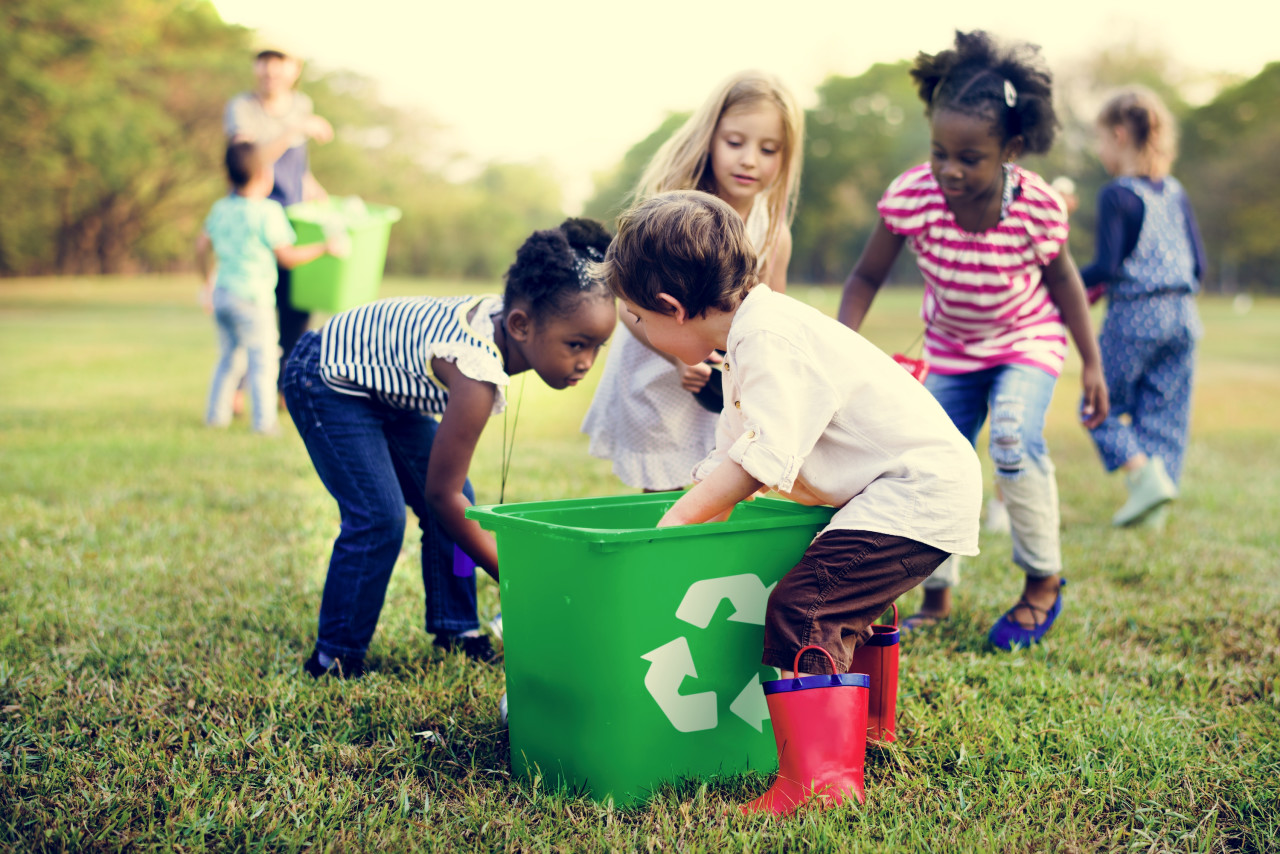Thankfully, the world is becoming more and more educated about recycling and why it’s so important to follow the 3Rs: Reduce, Reuse, Recycle. But there’s always room for further learning! So, to explore questions like, ‘how are things recycled?’ in more detail, we’ve put together the basics about recycling. Whether it’s educating adults or recycling for kids, information that’s easy to absorb and apply to the real world is key. Let’s go!
WHAT IS RECYCLING?
Simply put, recycling is the process of converting materials which would otherwise be wasted into new things to be used again.
According to government statistics, the UK recycled 45% of household waste in 2018, setting a new target of 50% for 2020. But how do we get to that figure? Well, one of the most important aspects is making sure that we’re all knowledgeable about recycling: what’s the point of it? What are the benefits?
WHY RECYCLE?
If you’ve been looking for a bit of motivation to go and recycle, look no further; it helps to identify some of the main reasons for doing so. These include:
Conserving natural resources
Sending less waste to landfill
Reducing pollution
Saving energy
Protecting wildlife and ecosystems
That are plenty of reasons for all of us to be sorting our waste and making sure that we do our part helping the world become more sustainable. Working from that base position we can move onto how we recycle.
HOW ARE THINGS RECYCLED?
In terms of the recycling process, let’s look at how four of the most common waste materials can be converted into something new:
Plastic. After collection, plastics are separated into different polymers (types of plastic materials) and cleaned. They are then melted into pellets that can be used to make new products.
Cardboard. Just like plastic, cardboard waste is first separated into different types. Once sorted, the cardboard goes into a big tank and is mixed with water to form a pulp. It is then filtered to remove impurities like tape, staples, etc. before being pulped again. Finally, the cardboard is rolled and dried, and new sheets are cut ready for reuse.
Glass. First the glass is sorted and washed to get rid of any impurities. Then, a process of crushing and melting is carried out, so that the glass can be remoulded into new bottles and jars.
Aluminium cans and tins. As with other recyclable items, cans are sorted and cleaned at a treatment plant. They’re melted into liquid and set into big blocks known as ingots. These ingots are then sent to specialist centres where they are rolled out into sheets of aluminium, ready for repurposing.
Always check your on-package recycling labels (OPRL). Follow the recommended actions to check whether you might need to remove the packaging sleeves or other components before recycling – it’s important to recycle what you can!
In addition to the above household materials, there are a number of other items that you can recycle, including:
Clothing and footwear
Home electricals and appliances
Batteries
Ink cartridges
For details about how and where to recycle items like these, check packaging and/or contact your local council about nearby recycling bins and centres.
WHAT IS RECYCLING FOR KIDS?
So, how can we go about explaining recycling to kids in the most effective manner? Have a look at these fun and alternative ways to get smart about plastic. The key is to present the information in a fun and engaging way, rather than lecturing them like it’s a school lesson. Use real world examples and make it interesting. The following examples will help you do just that:
Take them through the process via craft activities. Gather bottles, cereal packets and tins to make toys. Creating robots, boats, and musical instruments from these materials is a great way of making the recycling process fun and interesting for kids.
Talk to them about how recycling helps save marine life. Be specific about types of fish, birds, sea mammals, etc. The more you can bring it to life the better.
Play recycling sorting games. Encouraging kids through play is a fantastic way of getting their attention and educating them. Empower them to be part of the process in an enjoyable way. Consider taking our family pledge – achievable actions to help reduce our plastic footprint.
However you do it, always keep in mind the main question — what is recycling for kids? That way you can give them current information, facts and figures, while keeping things light-hearted, engaging and fun.
Now that you know more about how we recycle you can spread the word and help everyone do more for the environment.


